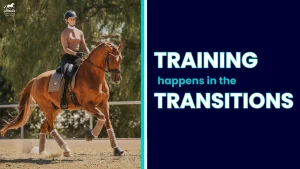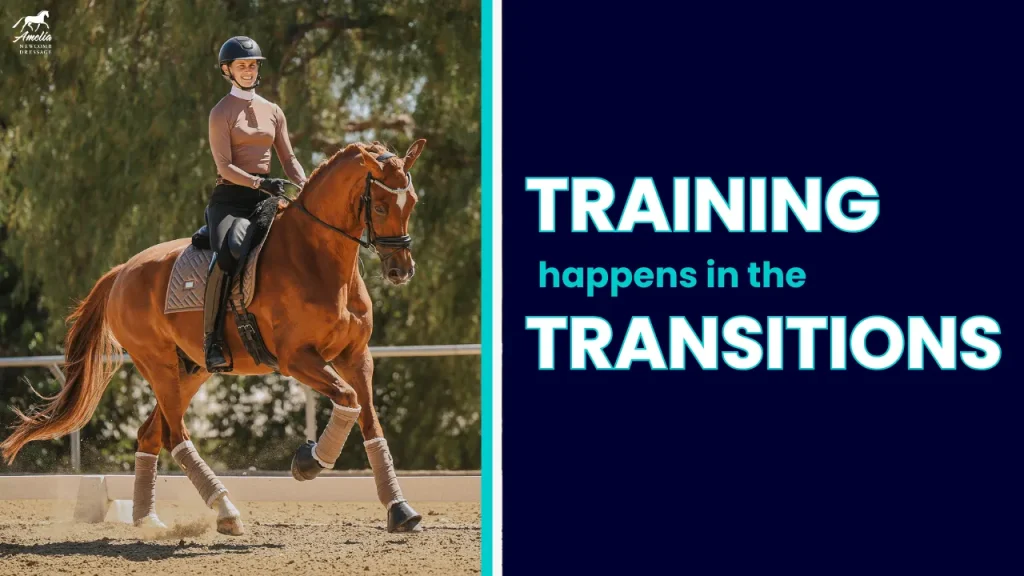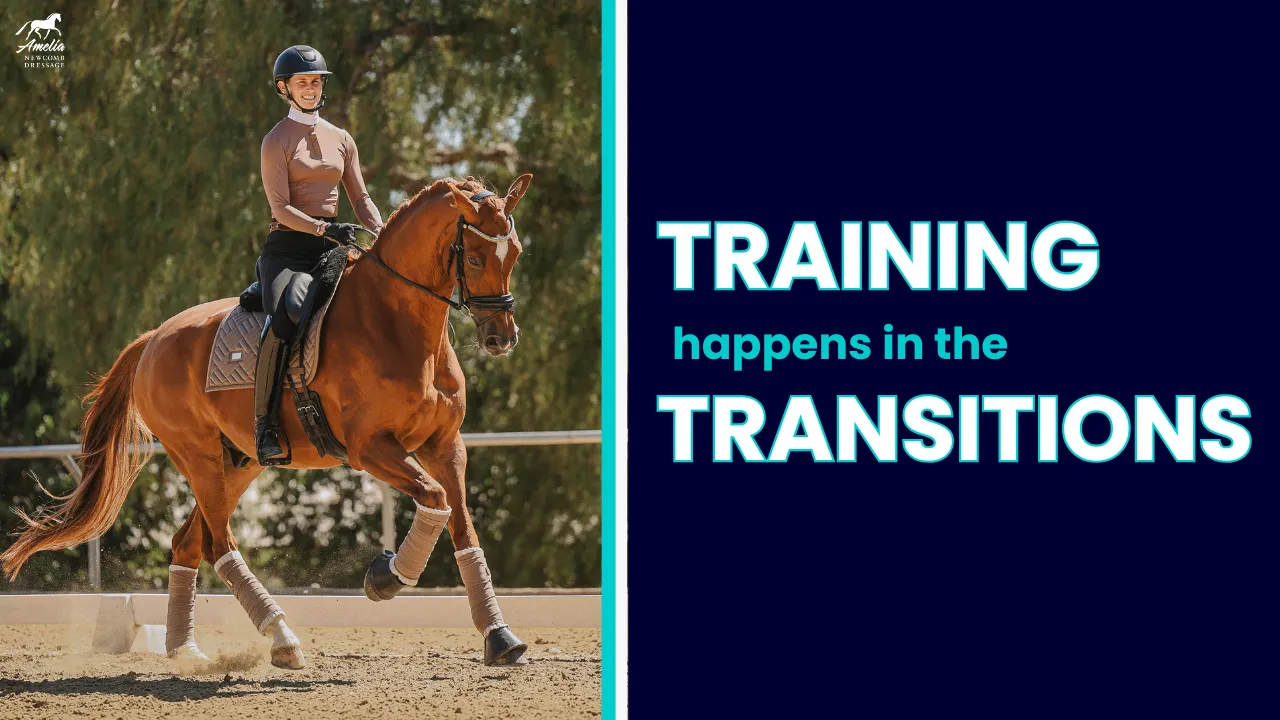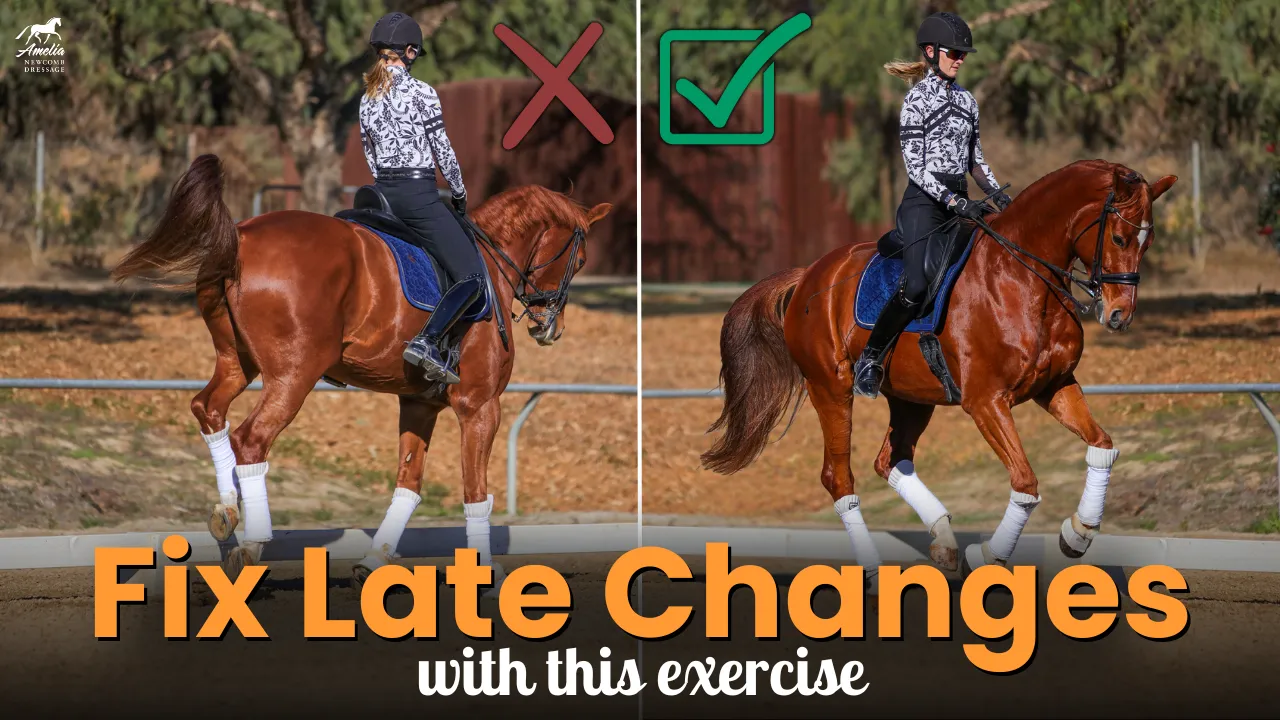One of the most common mistakes I see is riding with the reins way too long. Yes, of course, we want to be soft and we won’t want to hang on the reins, but if your reins are too long, it will be difficult to find connection with your horse and both you and your horse will be out of balance. If your trainer is constantly reminding you to shorten your reins or you find that they constantly slip longer as you ride, then this video is for you! We’re diving into why short reins matter, how they impact your connection with your horse, and, most importantly, how to keep them at the correct length.
Short reins aren’t just about appearance or control—they are essential for effective riding. Here’s why:
- Safety First: If your reins are too long and your horse spooks, you’ll struggle to regain control quickly. A properly shortened rein helps you manage your horse’s energy in unpredictable moments.
- Steady Contact: A rein that goes from slack to taut repeatedly is more uncomfortable for your horse than a steady, soft contact. Consistent connection creates a more comfortable and predictable feel for your horse.
- Developing Connection & Roundness: Maintaining the correct rein length is key to establishing a rounder frame and connection with your horse, allowing them to move in a balanced, engaged way.
How to Keep Your Reins Short
1. Correct Hand Position
Your grip should create a rooftop shape between your thumb and pointer finger, with your thumb pressing lightly on the rein. This keeps your reins from slipping while allowing flexibility in your hands and elbows. Using rubber reins with stoppers and gloves like the Tackified Coper Tech Leather Riding Gloves from Correct Connect makes it easier to hold your reins securely without excessive tension, which is especially helpful for riders with arthritis or weaker grip strength.
2. Shortening Your Reins While Riding
To adjust your reins without disrupting your horse’s rhythm, place both reins in one hand, slide down with the other, and press your thumb onto the rein to hold the new length. Whether at a walk, trot, or canter, shortening your reins gradually prevents sudden jerks and helps keep a smooth, forward rhythm.
3. Check Your Alignment Before Using Your Hands
Before using your reins, check your alignment and position—sit tall and deep in the saddle instead of leaning forward. A grab strap or Correct Connect’s Double Neck Strap can help reinforce this, reminding you to pull yourself deeper into the saddle before engaging your reins. This ensures that rein aids are effective without pulling yourself out of balance.
4. Rein Aids for Balance & Control
For steady contact, keep your hands together and in front of the withers. Allowing your elbows to move naturally with your horse’s rhythm. At the walk, trot, and canter, your elbows should follow the motion in a soft, elastic way. Always think of your seat and legs as the primary aids, using your reins as a complement rather than a crutch for control.
Short reins are essential for both safety and effective riding. If your rein length is inconsistent, your horse will struggle to stay balanced and engaged. Be sure to check out Correct Connect’s products for extra support, and use code “AMELIA10” to get a discount at checkout!
Happy Riding!
Amelia












































